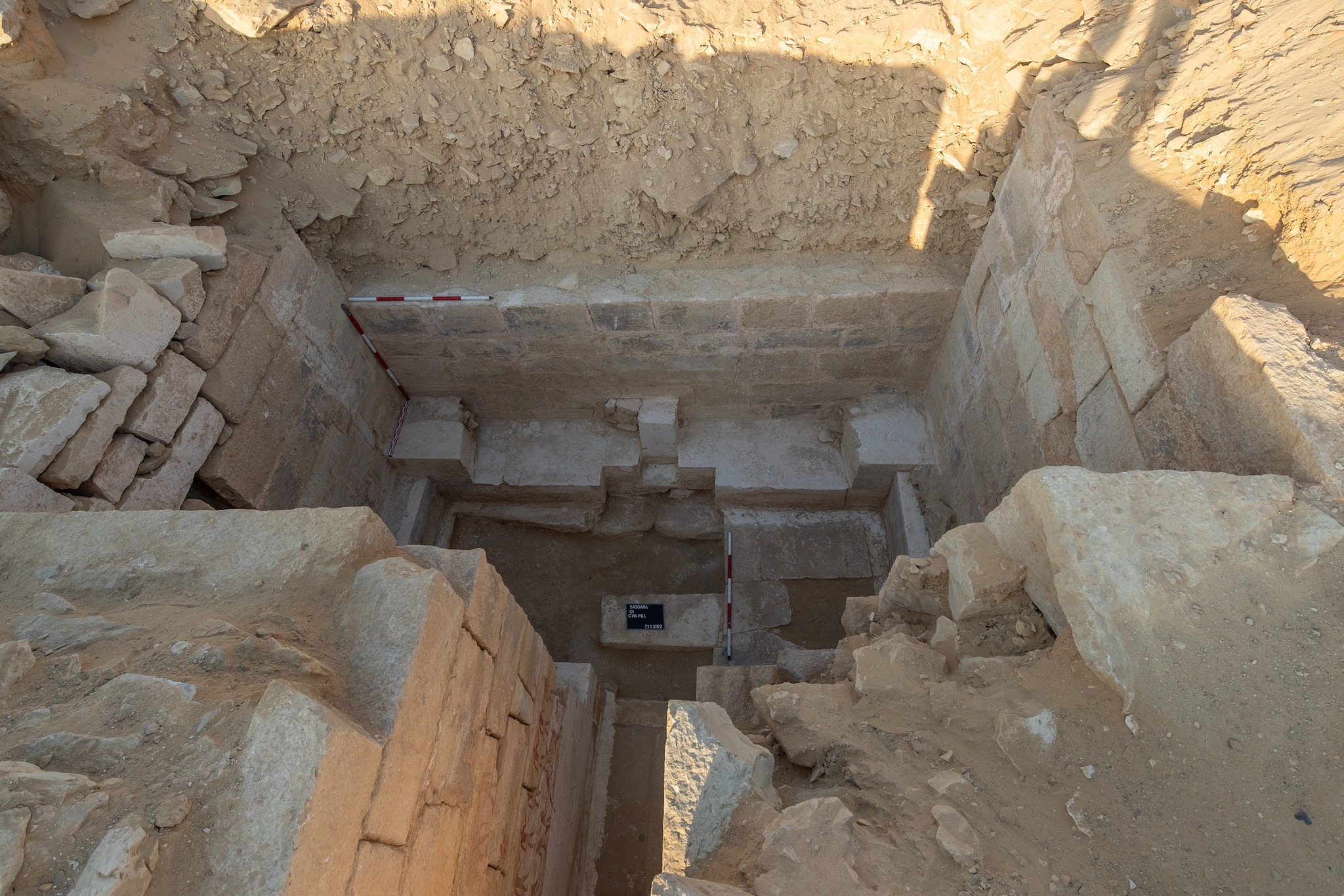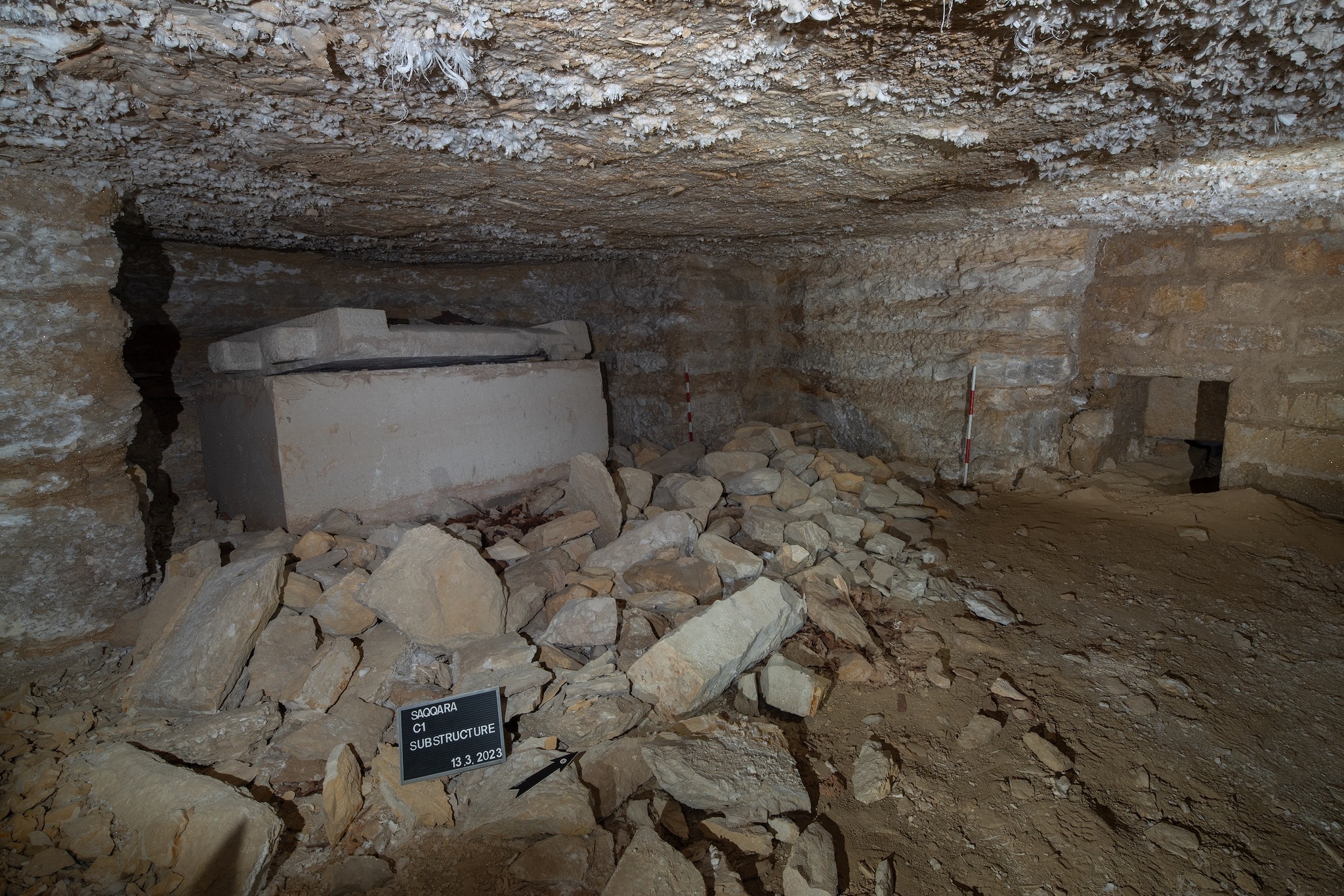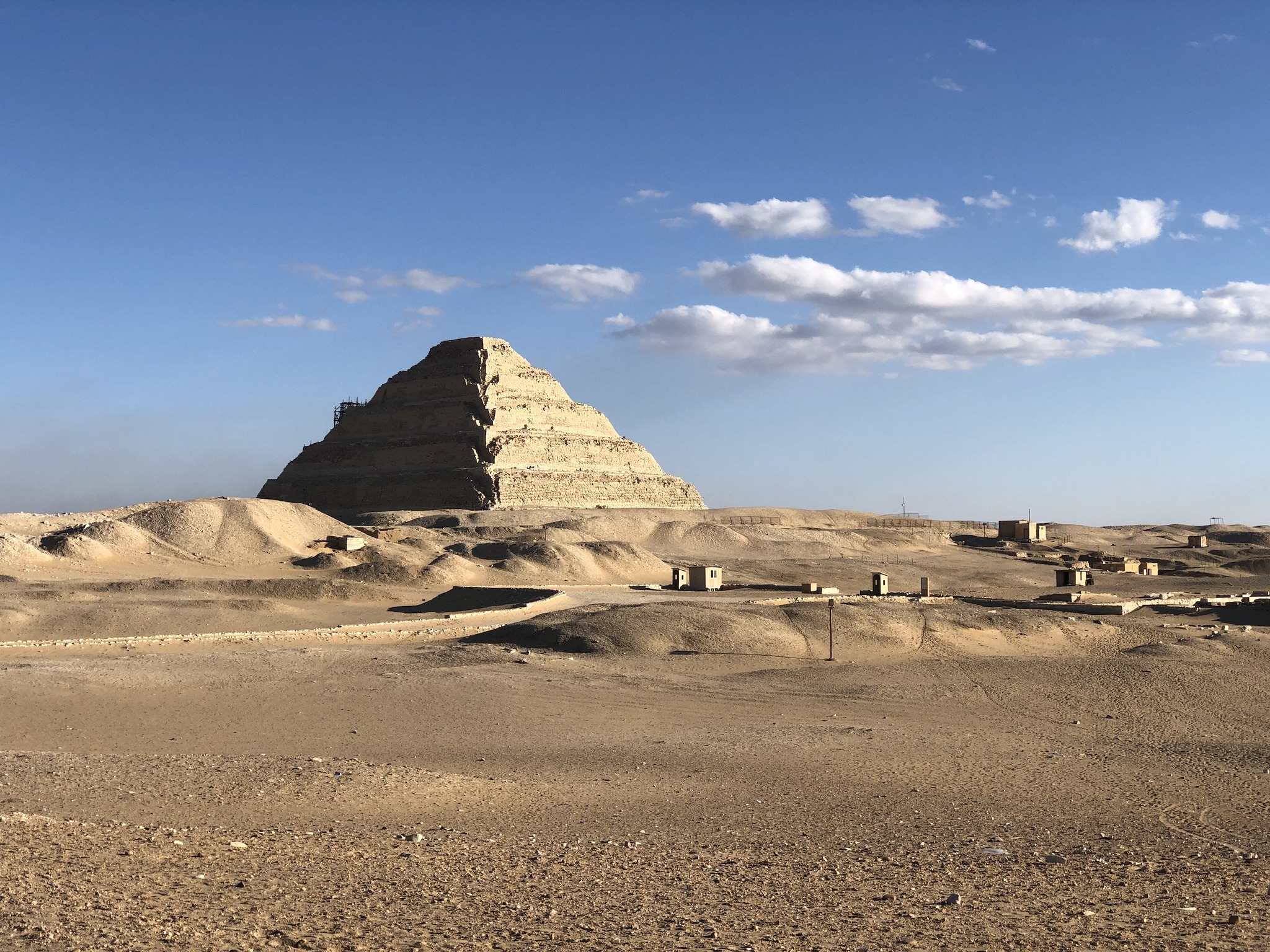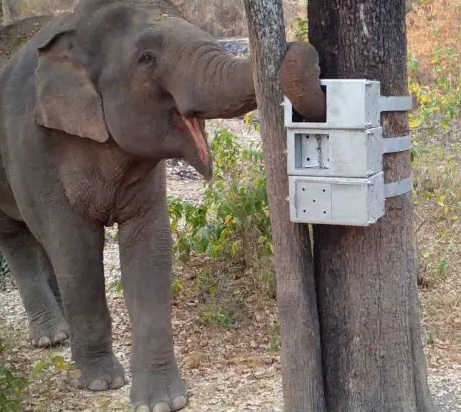Archaeologists have unearthed an ancient Egyptian mummy inside a long-lost tomb dating back 4,400 years. The tomb belonged to Ptahshepses, who served as the vizier and son-in-law of the Fifth Dynasty pharaoh Nyuserre Ini.
Although the tomb had been looted in ancient times, it still contained remnants of the original burial equipment, including pottery, remnants of votive offerings, canopic jars, and even a mummified fish.

This remarkable discovery was made by researchers from the Czech Institute of Egyptology at Charles University in Prague. The tomb is situated between the pyramid fields of Abusir and Saqqara and was originally partially excavated by French scholar Auguste Mariette almost 160 years ago. However, it subsequently vanished under the sands of the Western desert.
Access to the burial chamber is only possible through a twisting sloping passage blocked by a large limestone stone. Inside the tomb, researchers found a partially opened sarcophagus containing the complete mummy of Ptahshepses.
Anthropological analysis of the mummy revealed that Ptahshepses lived to at least 65 years of age or possibly even older. This discovery and the examination of the mummy have provided valuable insights into the evolution of mummification practices during the Old Kingdom pyramids era.

Miroslav Barta, head of research at Abusir, where the tomb was discovered, stated, “It was a difficult search lasting several years. Detailed satellite imagery of the area and the study of old maps led to the rediscovery of the tomb of Ptahshepses in 2022. The tomb of a man who changed the course of Egyptian history has thus been rediscovered, representing one of the expedition’s greatest recent discoveries. The research is still ongoing, and further discoveries will likely be made to shed new light on his family and times.”






